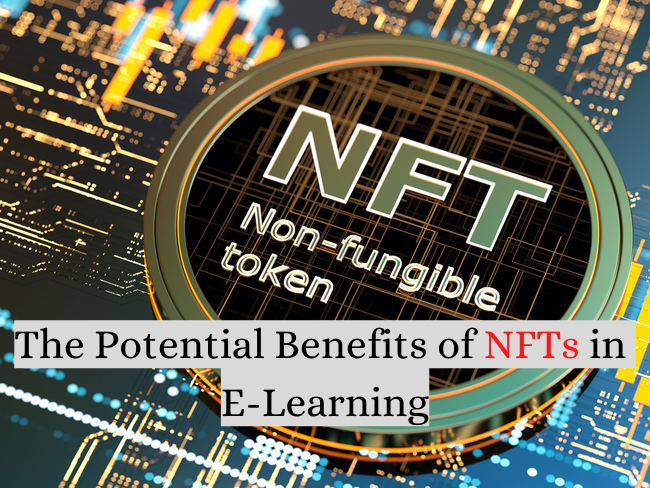The Potential Benefits of NFTs in E-Learning
NFTs have had a rollercoaster ride since they came to public attention. They have been met with praise, criticism, scepticism, and optimism, often all at the same time. What about the underlying technology of NFTs, though, and does that technology have any potential benefits for e-learning?
Before we look at the potential benefits of NFTs for e-learning, let’s first do a quick recap on what they are.
What Are NFTs – A Quick Recap
NFTs are unique digital items where ownership is managed on a blockchain. We covered blockchain technologies and how they might impact e-learning in a separate blog.
There are lots of ways to create a digital asset, however, so what makes NFTs different? The main difference between NFTs and other digital assets is that most other digital assets can be easily replicated.
With an NFT, it is straightforward to verify the owner and authenticity of an asset. As a result, NFTs make it next to impossible to copy a digital item and claim it is the original.
Let’s look at an example related to e-learning. When a learner completes a course, you might create and send them a certificate that they can then use in the future as proof. However, that certificate could be easily copied and/or amended, where it could then be used by someone who hasn’t completed the course.
By creating and issuing the certificate as an NFT, its authenticity is recorded on the blockchain. Because of the way blockchains work, this data can’t be altered.
In some situations, it might be possible to copy the physical appearance of the certificate. However, the fact it is a copy can be easily checked using data on the blockchain. The true owner of the certificate can then be established.
The Benefits of NFTs in E-Learning
We can now look at the main advantages that NFTs can potentially bring to staff training and e-learning content creation. There are four main benefits:
- Certification and credential authentication
- Recording other training information
- Copyrighting learning materials
- Rewards and incentives for learners
Certification and Credential Authentication
This potential advantage of NFTs has already been touched on in the example above. With NFT technologies, organisations can provide certificates to trainees that can’t be replicated. The same applies to credentials.
Recording Other Training Information
It isn’t just certificates and credentials that can be securely stored as an NFT. In fact, it is possible to record all learner training data as an NFT. This could include things like the e-learning courses the learner has completed, on-the-job training they have undertaken, and other milestones that are important on their development journey.
As with other use cases for NFTs, data that is stored in this way can’t be altered or deleted, enhancing the validity and authenticity of your training data. This helps to prevent fraud, it enhances your training strategy, and it can be used to increase confidence among your customers that your staff are properly trained and experienced.
Copyrighting Learning Materials
There are many situations where it is important to protect the copyright of the training materials that you create. After all, you have gone to the expense and effort of creating the content, so you should be the only entity that can claim ownership.
Creating learning materials and e-learning content as NFTs ensures there is permanent and irrefutable proof of ownership. This permanent and irrefutable proof of ownership can do everything from helping to protect your financial interests to protecting intellectual property to preventing the content from being used without permission.
Rewards and Incentives for Learners
Creating e-learning content that engages learners is one of the main goals of a development project. One of the ways you can enhance engagement is by giving learners rewards such as badges once they achieve certain milestones. The concept is similar to what you see in many games.
You can add weight and authenticity to the rewards you provide to learners by creating them as NFTs. You can even personalise the rewards given the fact NFTs are unique and can’t be replicated. This can enhance the impact of the reward and generate the desired outcomes whether that is optimising the learner experience, encouraging learners to continue learning new skills, a combination of the two, or anything else.
Not Just About NFTs
While it is worth exploring NFTs and how they can potentially benefit e-learning, it is also important to highlight that NFTs are unlikely to make an impact on your training strategy in isolation. Instead, NFTs are one part of a wider range of new and evolving technologies that are set to transform the e-learning industry and how organisations train their employees.
Those other technologies include the blockchain, which has already been mentioned. They also include evolving technologies like the metaverse and Web 3.0, as well as more established technologies that continue to develop. Examples of the latter include augmented reality, virtual reality, and mixed reality, as well as 5G.
The aim of all these technologies is to make e-learning and online training a more immersive and personalised experience delivered in a format that maximises engagement.
E-learning has brought significant benefits to the training operations of businesses in all industries. With these emerging technologies, we are now entering a new and exciting phase.
